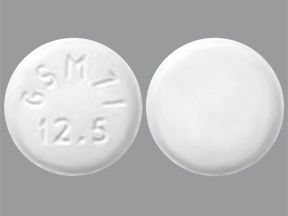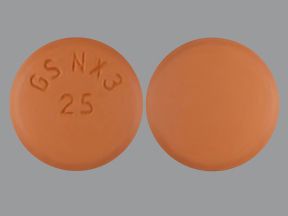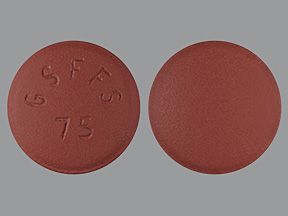Promacta (eltrombopag) is a prescription drug that’s used to treat certain blood disorders, including low platelet level. The drug comes as a tablet and a liquid suspension (a kind of liquid mixture) that you swallow. It’s usually taken once per day.
Promacta is used in adults and some children to treat:
- thrombocytopenia (low platelet level) caused by chronic (long lasting) immune thrombocytopenia
- thrombocytopenia caused by hepatitis C
- severe aplastic anemia in certain situations
The active ingredient in Promacta is eltrombopag. (An active ingredient is what makes a drug work.)
Promacta belongs to a group of drugs called thrombopoietin receptor agonists (TPO-RAs).
This article describes the dosages of Promacta, as well as its strengths and how to take it. To learn more about Promacta, see this in-depth article.
Promacta comes as a tablet and a liquid suspension (a kind of liquid mixture), both of which you swallow.
The table below highlights the basics of Promacta’s dosage for adults. All doses are listed in milligrams (mg).
| Condition | Usual Dosage | Maximum Dosage |
| thrombocytopenia caused by chronic immune thrombocytopenia | 50 mg taken once daily | 75 mg per day |
| thrombocytopenia caused by hepatitis C | 25 mg taken once daily | 100 mg per day |
| severe aplastic anemia that hasn’t been treated before | 150 mg taken once daily for 6 months | 150 mg per day |
| severe aplastic anemia that hasn’t responded to other treatments | 50 mg taken once daily | 150 mg per day |
What is Promacta’s form?
Promacta comes as a tablet and a liquid suspension (a kind of liquid mixture), both of which you swallow.
What strengths does Promacta come in?
Promacta comes in the following strengths:
- tablets: 12.5 mg, 25 mg, 50 mg, and 75 mg
- liquid suspension: 12.5 mg and 25 mg
What are the usual dosages of Promacta?
The information below describes dosages that are commonly used or recommended. But be sure to take the dosage your doctor prescribes for you. They’ll determine the best dosage to fit your needs.
Dosage for adults with immune thrombocytopenia (ITP)
For thrombocytopenia that’s caused by chronic (long lasting) ITP, you’ll take 50 mg once daily until your blood tests are within a healthy range.
Dosage for thrombocytopenia in adults with chronic hepatitis C
For thrombocytopenia caused by hepatitis C, you’ll take 25 mg of Promacta once daily. You’ll continue taking the drug until your blood test results are within a healthy range.
Dosage for adults with severe aplastic anemia that hasn’t been treated before
For aplastic anemia (a bone marrow disorder that causes low red blood cell levels) that hasn’t been treated before, you’ll take 150 mg once daily. For this condition, you’ll take Promacta with an immunosuppressant drug (which weakens the immune system).
You’ll continue taking Promacta and the immunosuppressant drug for 6 months.
Dosage for adults with severe aplastic anemia that hasn’t responded to other treatments
For aplastic anemia that hasn’t responded to other treatments, you’ll take 50 mg of Promacta once daily. You’ll continue taking Promacta until your blood test results are within a healthy range. If your blood test results don’t show improvement after 16 weeks, your doctor will likely have you stop treatment with Promacta.
What’s the dosage of Promacta for children?
Promacta can be used in certain children. See the table below for details.
| Condition | Dosage | Maximum Dosage |
| thrombocytopenia that’s caused by chronic ITP | • children ages 1 to 5 years: 25 mg taken once daily • children ages 6 years and older: 50 mg taken once daily | 75 mg per day |
| thrombocytopenia caused by hepatitis C | 25 mg taken once daily | 100 mg per day |
| severe aplastic anemia that hasn’t been treated before | • children ages 12 years and older: 150 mg taken once daily for 6 months • children ages 6 to 11 years: 75 mg taken once daily for 6 months • children ages 2 to 5 years: 2.5 mg per kilogram of body weight for 6 months | 150 mg per day |
| severe aplastic anemia that hasn’t responded to other treatments | 50 mg taken once daily | 150 mg per day |
Is Promacta taken long term?
No, Promacta is usually taken for a few months only. Once your blood test results are within a healthy range, you’ll end your treatment.
For aplastic anemia that has not been treated, Promacta can be taken for 6 months. If you and your doctor determine that it’s safe and effective for your condition, you’ll likely take Promacta for 6 months.
Dosage adjustments
If you’re taking Promacta for thrombocytopenia, your dose may be adjusted based on certain blood test results. These adjustments are made to help your platelet level reach a healthy range without getting too high. (A high platelet level can raise your risk of serious side effects, such as a blood clot.)
If you have certain liver problems, or if your liver enzymes get too high during your Promacta treatment, your doctor may decrease your dose. Or they may have you temporarily stop taking Promacta until your blood tests show that your liver enzymes are within a healthy range.
If you are of East or Southeast Asian ancestry (such as Chinese, Japanese, Taiwanese, or Korean), your starting dose of Promacta may be lower than usual. This is because people with East or Southeast Asian ancestry are more sensitive to Promacta and have a higher risk of side effects.
If the reduced starting dose works well for you, your doctor will likely increase your dose to the usual starting dose.
If you have questions about whether your dose needs to be adjusted, talk with your doctor.
The dosage of Promacta you’re prescribed may depend on several factors. These include:
- the type and severity of the condition you’re using the drug to treat
- your age
- other conditions you may have (see “Dosage adjustments” just above)
Promacta comes as a tablet and a liquid suspension (a kind of liquid mixture), both of which are swallowed.
You should not take Promacta with food, unless it’s food that’s low in calcium, such as rice or certain vegetables. This is because calcium can make it hard for your body to absorb Promacta.
You should also take Promacta at least 2 hours before or 4 hours after any antacids or supplements that you take.
If you have trouble swallowing tablets, see this article for tips on how to take this form of medication.
For information on the expiration, storage, and disposal of Promacta, see this article.
Accessible drug containers and labels
Some pharmacies provide medication labels that:
- have large print or use braille
- feature a code you can scan with a smartphone to change the text to audio
Your doctor or pharmacist may be able to recommend pharmacies that offer these accessibility features if your current pharmacy doesn’t.
If you have trouble opening medication bottles, let your pharmacist know. They may be able to supply Promacta in an easy-open container. They may also have tips to help make it simpler to open the drug’s container.
If you miss a dose of Promacta, take it as soon as you remember. But if it’s almost time for your next dose, just skip the missed dose and take your next dose at its usual time. You should not take two doses at once to make up for a missed dose. Doing so could raise your risk of side effects.
If you have other questions about missing a dose, talk with your doctor.
If you need help remembering to take your dose of Promacta on time, try using a medication reminder. This can include setting an alarm or downloading a reminder app on your phone.
Do not take more Promacta than your doctor prescribes as this can lead to serious side effects.
Symptoms of overdose
Symptoms caused by an overdose of Promacta can include:
- blood clots, such as a deep vein thrombosis or a pulmonary embolism
- swelling and pain in one leg or arm
- chest pain
What to do in case you take too much Promacta
Call your doctor right away if you think you’ve taken too much Promacta. You can also call 800-222-1222 to reach America’s Poison Centers or use its online resource. But if you have severe symptoms, immediately call 911 (or your local emergency number) or go to the nearest emergency room.
The sections above describe the usual dosages provided by the drugmaker. If your doctor recommends Promacta for you, they’ll prescribe the dosage that’s right for you.
Remember, you should not change your dosage of Promacta without your doctor’s recommendation. Only take Promacta exactly as prescribed. Talk with your doctor if you have questions or concerns about your current dosage.
Examples of questions you may want to ask your doctor include:
- Would a different dosage increase or reduce my risk of side effects from Promacta?
- Will my Promacta dosage be adjusted if I’m taking other medications with it?
- If Promacta isn’t working well enough for me, will my dosage change?
To get information on different conditions and tips for improving your health, subscribe to any of Healthline’s newsletters. You may also want to check out the online communities at Bezzy. It’s a place where people with certain conditions can find support and connect with others.
Disclaimer: Healthline has made every effort to make certain that all information is factually correct, comprehensive, and up to date. However, this article should not be used as a substitute for the knowledge and expertise of a licensed healthcare professional. You should always consult your doctor or another healthcare professional before taking any medication. The drug information contained herein is subject to change and is not intended to cover all possible uses, directions, precautions, warnings, drug interactions, allergic reactions, or adverse effects. The absence of warnings or other information for a given drug does not indicate that the drug or drug combination is safe, effective, or appropriate for all patients or all specific uses.




